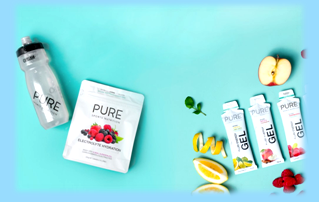Introduction
Hydration is a key component of sports nutrition. Athletes rely on fluid balance for not only physical performance, but also safety and rehabilitation. Along with water, electrolytes—minerals having electrical charges—are essential for hydration, muscular function, and nerve signalling. A well-planned hydration strategy that incorporates electrolyte balance can considerably improve athletic performance and help prevent dangerous problems like heat exhaustion or hypernatraemia.
Why Hydration Matters in Sports
Water contributes for around 60% of the human body and is vital for:
- Regulating body temperature
- Lubricating joints
- Transporting nutrients and oxygen
- Removing waste through sweat and urine
During intensive or extended physical exercise, particularly in hot surroundings, the body can lose considerable volumes of fluid through sweat. Even a 1-2% drop in body weight due to dehydration can impair both physical and mental performance.
Understanding Electrolytes
Electrolytes are minerals that dissolve in bodily fluids and help maintain:
- Fluid balance
- Nerve transmission
- Muscle contraction, including the heart
The most important electrolytes for athletes include:
Sodium (Na⁺) regulates fluid balance & blood pressure, but
Potassium (K⁺) promotes muscle and neurone activity.
Calcium (Ca²⁺) promotes muscular contractions and bone health.
Magnesium (Mg²⁺) is involved in energy production and muscle relaxation.’
Chloride (Cl⁻) works with salt to maintain fluid balance.
Electrolyte Loss Through Sweat
Sweating not only eliminates water but also electrolytes, particularly sodium, which is the most abundant electrolyte found in sweat. If not replaced, this may result in:
- Muscle cramps
- Fatigue
- Dizziness
- Decreased endurance
Heavy sweaters or those exercising in hot climates are at especially high risk for electrolyte depletion.
Signs of Dehydration and Electrolyte Imbalance
- Thirst
- Dry mouth
- Dark-colored urine
- Headaches
- Muscle cramps
- Rapid heartbeat
- Confusion or dizziness
Severe imbalances can result in heatstroke, hyponatremia (low sodium), or arrhythmias, which require medical attention.
Hydration Strategies for Athletes
Before Exercise
- A couple of hours before starting to work out, try to consume 500–600 ml water.
- Drink another 200–300 ml about 20–30 minutes before starting.
During Exercise
- Drink 150–350 ml every 15–20 minutes.
- When exercising for more than an hour or in hot weather, use electrolyte drinks.
After Exercise
- Rehydrate with 1.5 times the amount of fluid lost (measured by weight difference before and after exercise).
- Include sodium-rich fluids or foods to speed up rehydration.
Sports Drinks vs. Water
| Water | Sport Drinks |
| Perfect for short, low-intensity workouts. | Perfect for long, intense, or hot-weather workouts |
| No calories or added sugars | Contains electrolytes, sugar, and calories |
| May not replace lost sodium | Helps maintain electrolyte balance |
Choose based on duration, intensity, climate, and individual sweat rate.
Conclusion
Proper hydration and electrolyte balance are essential for sports nutrition. Athletes who understand and use proper hydration practices can avoid tiredness, improve performance, and maintain long-term health. Personalized hydration strategies, adapted to individual sweat rates, exercise duration, and environmental variables, produce the best results. Finally, being hydrated is more than just drinking water; it’s about maintaining the proper fluid and electrolyte balance at the right times.
